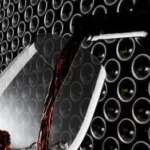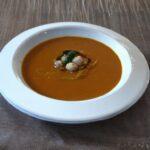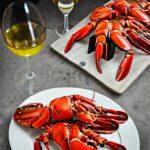Per l’uso dei vini in cucina dobbiamo seguire delle indicazioni in generale. Ovviamente non è una regola rigida, ma sono consigli maturati con l’esperienza.
Per i piatti di pesce, crostacei, molluschi, rane, lumache: vino bianco secco.
Per carni bianche ( tipo pollame, coniglio, vitello) : vino bianco secco.
Per patè, galantine, vitello tonnato, paste cucinate al forno: vino bianco secco.
Per torte di frutta, dolci tipo ciambelle, bocconotti: vino bianco amabile, dolce sul genere della Marsala o liquori.
Per carni rosse ( tipo filetto di bue), selvaggina da piuma e da pelo, anatra e altri volatili:
vino rosso più o meno robusto in rapporto agli ingredienti aromatici e al tipo di selvaggina.
Qualche eccezione
Qualche eccezione persiste: qualche volta il il pesce si può cucinare anche con il vino rosso; esempi: ” Cacciucco alla livornese ” o Trottelle al Berbera”.
Altra cosa importantissima il vino in cucina è conoscerlo: assaggiando, si può capire con l’esperienza l’effetto che produrrà la cottura. Non adoperare mai bottiglie di vino troppo vecchie (detto passato) , il vino bianco troppo invecchiato va soggetto alla maderizzazione, e se presenta un colore troppo ambrato, evitare di usarlo.
Alcune ricette come la lingua alla Cortese, richiede lo stesso vino il Cortese; stesso discorso vale per il Coniglio al Marzemino. Pero’ ritornando al vino Cortese se la lingua viene servita come antipasto l’abbinamento va bene, se invece viene usato come primo piatto è consigliabile un buon rosso come il Dolcetto, ingrado così di reggere la portata successiva.
Vi sono dei casi in cui è fermamente sconsigliabile l’uso del vino in Cottura a tavola. Ciò avviene nelle scaloppine al Madera o al Marsala. Questo perchè, per esempio il Marsala, lo possiamo trovare di quattro tipologie: Marsala Vergine, Marsala fine, Marsala speciale e Marsala superiore. Questi Marsala sono molto differenti fra di loro e che vanno dal secco al dolce. Quindi, per la preparazione di piatti di carne bisogna usare il tipo secco e precisamente il Marsala vergine superiore, mentre se vogliamo fare un dessert si puo’ adoperare quello dolce o il dolce liquoroso.
Stesso discorso per il Valpolicella secco per salumi, carni rosse e selvaggina. Mentre il Valpolicella dolce é consigliabile adoperarlo come vino da dessert.





